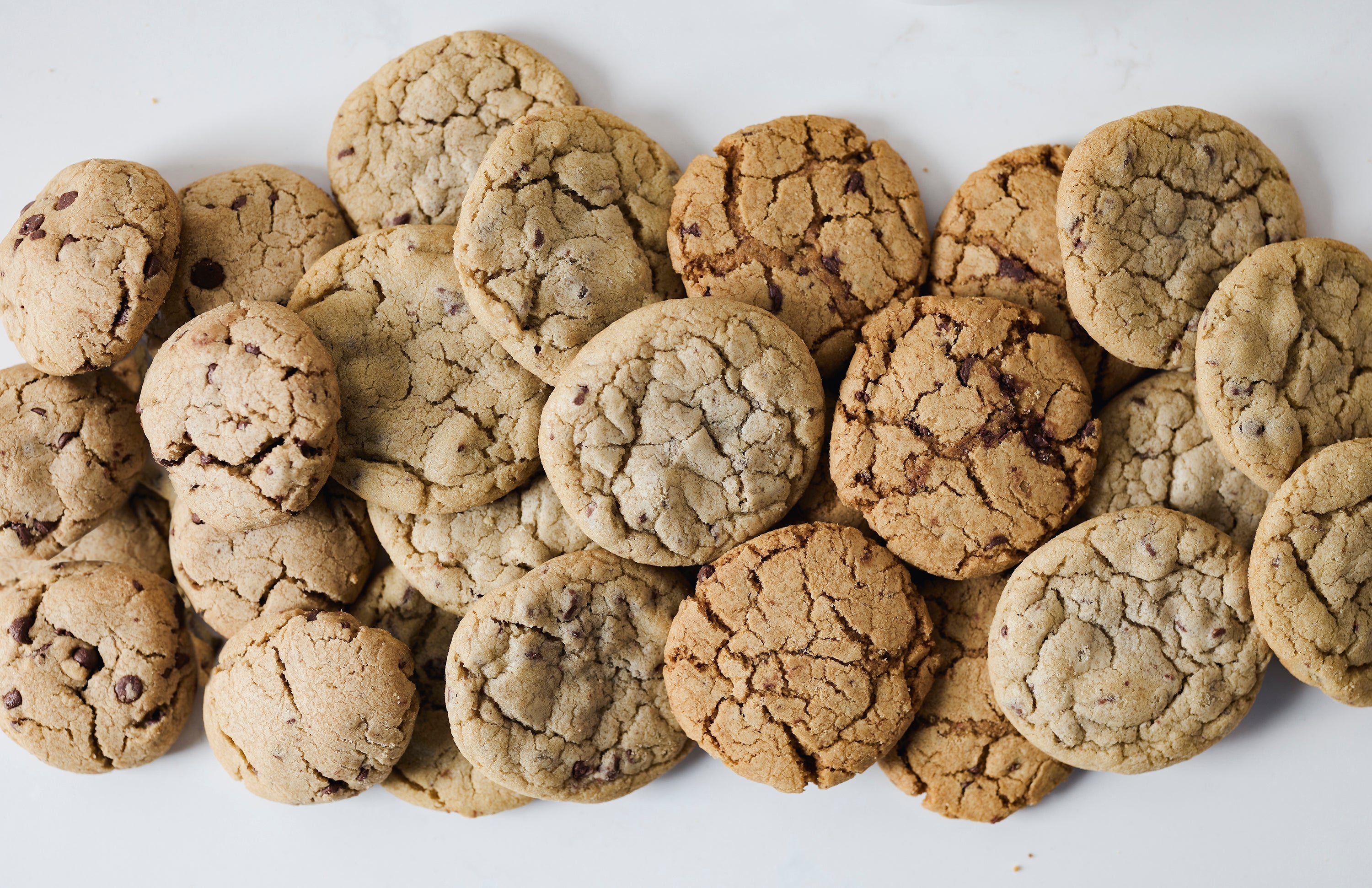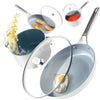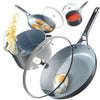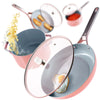
Discover how butter temperature transforms your chocolate chip cookies! Learn the science behind cold, room temp, melted, and browned butter to create your perfect cookie.
Cold Butter:
Cold butter doesn’t easily incorporate into the dough, leaving small solid pieces distributed throughout. As the cookies bake, the butter melts more slowly, keeping the dough cooler for longer. This slows down spreading, creating thick cookies with crispy edges and soft, tender centers. Cold butter also traps more air during mixing, which can contribute to a lighter texture overall.
Room Temperature Butter:
This is your Goldilocks cookie—not too thick, not too thin. Room temperature butter is soft enough to cream with sugar, which incorporates air into the dough. This step helps create a more uniform structure, balancing the cookie’s spread and rise. The result? A cookie that’s not too thin, not too thick, with just the right mix of chewiness and crunch.
Melted Butter:
Love a crisp cookie? Melted butter spreads more, creating thin, crispy cookies with a satisfying snap. Without the air-trapping step of creaming, there’s no structural boost to hold the cookie up. Instead, the dough spreads more during baking, resulting in thin, wide cookies. The higher liquid content (from the melted butter) also increases the likelihood of crisp edges.
Browned Butter:
Browning butter involves gently heating it until the milk solids toast, creating rich, nutty notes and a deeper color. This chemical reaction, called the Maillard reaction, brings bold, caramel-like flavors to your cookies. Browned butter also has slightly less moisture, which can make the cookies denser and chewier while amplifying their taste.














